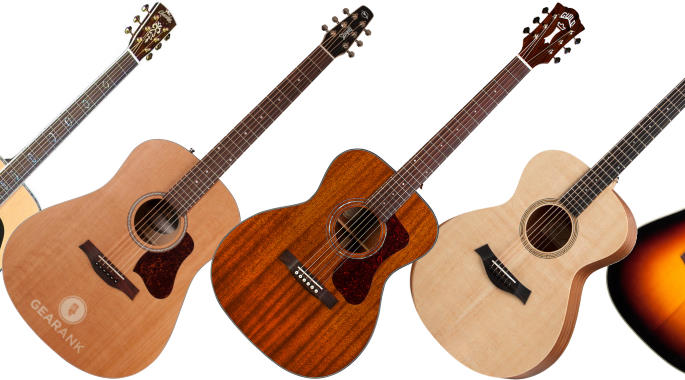
Disclosure
We recommend all products independently of 3rd parties including advertisers. We earn advertising fees from:
• • • • •

• • • • •
Amazon
As an Amazon Associate we earn from qualifying purchases.
• • • • •
Acoustic Guitar Guides
The $500 to $1,000 price range is where you can find accessibly priced acoustics with superb build quality and premium tonewoods, a great entry way into the world of premium acoustic guitars.
And to help you in picking your first best acoustic guitar, here we feature the best acoustic guitars in the $500 to $1000 price range, narrowed down to what the market considers to be the cream of the crop. As we normally do here at Gearank, this list is based on actual reviews, ratings, discussions and recommendations from users and experts.
NB: These guitars are pure acoustics without pickups, if you’re looking for a guitar you can plug in then see our Acoustic-Electric Guitar Guide, otherwise you can add your own aftermarket Acoustic Guitar Pickups later if you want to.
The Best Acoustic Guitars Under $1000
| Gearank* | SRC* | Check Price | ||
|---|---|---|---|---|
 | Seagull S6 Original | 94 | 700+ | |
 | Taylor Academy 10 | 98 | 125+ | |
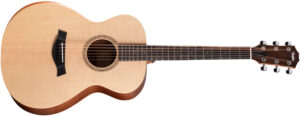 | Taylor Academy 12 | 96 | 70+ | |
 | Guild OM-120 | 93 | 60+ | |
 | Guild D-140 | 94 | 60+ | |
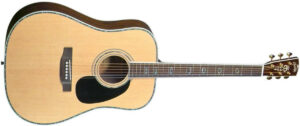 | Blueridge BR-70 | 92 | 150+ |
Author & Contributors
Alexander Briones
I have been writing about and researching music gear for many years, all while serving as a music director at my local church. I engage in guitar playing and singer-songwriter stints, in addition to mentoring young musicians and teaching guitar and bass.
Seagull S6 Original 046386
Canada made Seagull acoustics are well loved for their quality, as evidenced by the many high ratings that they continue to rake in in reviews. The S6 Original 046386 is currently their best rated guitar in this price range, bringing with it Seagull's brand of playability and build quality, at a very accessible price point.
At the core of this guitar is a solid cedar top, which together with Seagull's modified Dreadnought Guitar profile results in good acoustic projection and clarity. The company also ensures tonewood quality and structural stability by pressure testing the tops.
Like other Seagull guitars, this one features wild cherry back and sides, which helps give the instrument that distinctly Seagull balanced tone.
The neck is crafted from silver leaf maple, topped by rosewood fingerboard. It features Seagull's distinct narrow headstock shape which aligns the strings better with the tuners for more stable tuning.
It also features compensated saddle and nut made from composite material TUSQ which is known for improved sustain.
Specifications:
- Body Shape: Modified Dreadnought
- Top: Solid Cedar
- Back and Sides: Wild Cherry
- Finish: Semi-Gloss Natural
- Bridge: Rosewood
- Neck: Silver Leaf Maple
- Neck Profile: Not Specified
- Fingerboard: Rosewood
- Fingerboard Radius: Not Specified
- Number of Frets: 21
- Frets to Body: 14
- Scale Length: 25.5"
- Nut Width: 1.8"
Pros
Being well made is the main reason why the Seagull S6 Original is rated highly, impressing many with its solid build, quality tonewood, and good overall quality. Many are also pleased with how good it sounds, some even point out how better sounding it is compared to the usual dreadnought style acoustics. Playability is also a big factor in reviews, it's wider 1.8" nutwidth is well received by players with bigger fretting fingers. Guitarists are also pleased with what this guitar brings given its humble price tag.
Cons
There are a few who are turned off with its wide nutwidth. While others are not too pleased with the aesthetics of its narrow headstock design, especially those who prefer more traditional looking acoustics.
Overall
With its high ratings and good price point, the Seagull S6 Original is very easy to recommend, especially for those who prefer guitars with wider necks.
Taylor Academy 10 Dreadnought
The Academy 10 is a short scale dreadnought style guitar from popular acoustic guitar manufacturer Taylor.
It is part of their entry level Academy line of acoustics, which makes Taylor's brand of attention to detail and build quality more accessible. It is also a great entry way into the world of Taylor guitars.
For the price, this Taylor guitar comes with a solid spruce top, paired with layered sapele for the back and sides.
Its most distinct feature though is its beveled armrest, a feature found in more expensive models, which makes for a more comfortable playing experience. And since you're arm does not need to rest too much on the guitar top, it also helps with the guitar's resonance and responsiveness.
Other features include having a maple neck with 20-fret ebony fingerboard, Nubone nut and Micarta saddle.
Note that this guitar has a shorter scale length of 24.8" and a nutwidth of 1.6875"
Specifications:
- Body Shape: Academy Dreadnought
- Top: Solid Spruce
- Back and Sides: Layered Sapele
- Finish: Varnish Natural
- Bridge: Ebony
- Neck: Maple
- Neck Profile: Slim Profile
- Fingerboard: Ebony
- Fingerboard Radius: 15"
- Number of Frets: 20
- Frets to Body: 14
- Scale Length: 24.8"
- Nut Width: 1.6875"
Pros
Most users are happy with how comfortable and easy to play the Academy 10 is, thanks to its beveled arm rest, short scale length and narrow nut width. And because of its playability, many describe it as a great beginner guitar. It also gets a lot of kudos for how good it looks, bearing Taylor's attention to detail. Finally, owners are happy with what the guitar they got for the money, thanks to its good specs and overall quality.
Cons
The smaller dreadnought body of this guitar means that it doesn't have the same bass and projection as a regular dreadnought.
Overall
If playability and build quality ranks high in your book, then definitely check out the Taylor Academy 10.
Taylor Academy 12 Grand Concert
Taylor guitars is well known for high quality acoustics, and this same quality is found in the accessibly priced Academy 12 guitar.
This is part of Taylor's entry-level Academy line, with a Grand Concert style body and a beveled arm rest. This beveled arm rest allows for a more comfortable playing position, and also reduces unnecessary contact to the guitar top which improves its resonance.
Speaking of top, this guitar comes with solid spruce top, supported by layered sapele back and sides. Together they form its Grand Concert body shape which is known for its articulate tone that works nicely with fingerstyle players.
Other features include slim profile maple neck, ebony bridge and fingerboard, Nubone nut and Micarta saddle.
Specifications:
- Body Shape: Academy Grand Concert
- Top: Solid Spruce
- Back and Sides: Layered Sapele
- Finish: Varnish Natural
- Bridge: Ebony
- Neck: Maple
- Neck Profile: Slim Profile
- Fingerboard: Ebony
- Fingerboard Radius: 15"
- Number of Frets: 20
- Frets to Body: 14
- Scale Length: 24.8"
- Nut Width: 1.6875"
Pros
Outstanding, perfect and fantastic are just three of the many positive remarks that flood reviews of the Taylor Academy 12. Many are pleased with its superb playability, with many saying that they should have started with this guitar. Others commend its tone, which many report to be substantially better than what they were using prior. Build quality and overall value for money also get a lot of kudos from guitarists of different playing and experience levels.
Cons
Given its shorter scale length and smaller body size, projection and bass is expected to be a bit lacking.
Overall
If you're looking for a premium quality yet affordable acoustic guitar to start with, or for a grab and go beater guitar, then definitely check this out.
Guild OM-120 Orchestra
Last year this was one of the two equally highest rated guitars in this guide.
These accolades were achieved by Guild paying exquisite attention to detail on every part of the instrument from its very playable flattened C profile neck to its nicely tensioned 25.5" scale length to add a little sparkle to its warm mahogany tone.
It's a versatile guitar that is used for rhythm, folk, worship, blues, rock, fingerstyle and it's employed on stage as well as in the studio.
Specifications:
- Body Shape: Mid-sized Orchestra
- Top: Solid African Mahogany
- Back and Sides: Solid African Mahogany
- Finish: Gloss Polyurethane Natural
- Bridge: Indian Rosewood
- Neck: Mahogany
- Neck Profile: C Shape
- Fingerboard: Indian Rosewood
- Fingerboard Radius: 16"
- Number of Frets: 20
- Frets to Body: 14
- Scale Length: 25.5"
- Nut Width: 1.75"
Pros
Users love the tone and playing feel of the Guild OM-120, so much so that some compare it favorably over the much more expensive mahogany Martin 000-15M. The OM-120's all solid mahogany construction gives it a very warm sound that seriously impresses the vast majority of guitarists who play it. Tony Polecastro from Acoustic Life TV said it has "wonderful warmth and great punch but also kind of this very seasoned woody kind of bass sound", you can see his full review in the video below.
Cons
It's quite difficult trying to find anyone that has any serious complaints about this guitar.
Overall
This is a great 'all round' guitar that you can use for most musical and playing styles.
Guild Westerly Collection D-140
Cordoba's acquisition of Guild may have been a good thing for their acoustic line, case in point is the Guild Westerly Collection D-140 which is well received for its great specs and build quality.
With its solid sitka spruce top and solid mahogany back and sides, this guitar can give more expensive acoustics run for their money.
The premium tonewoods used are shaped into the familiar dreadnought form, so what you're getting is an all-solid wood dreadnought at a more accessible price point. The top also features scalloped sitka spruce bracing for improved resonance.
It has a mahogany c-profile neck with rosewood fingerboard, with a 25.5" scale length, 1.75" nut width and 16" radius.
Other features include bone nut and saddle, and vintage-style open gear tuners.
Specifications:
- Body Shape: Dreadnought
- Top: Solid Sitka Spruce
- Back and Sides: Solid Mahogany
- Finish: Gloss Polyurethane Antique Burst
- Bridge: Rosewood
- Neck: African Mahogany
- Neck Profile: C Shape
- Fingerboard: Rosewood
- Fingerboard Radius: 16"
- Number of Frets: 20
- Frets to Body: 14
- Scale Length: 25.5"
- Nut Width: 1.75"
Pros
Owners are very happy with what they got for their money, some even boast that the all-solid wood specs of this guitar can go toe to toe with more expensive guitars. Many are also pleased with its overall aesthetics which users describe as gorgeous and beautiful. Being an all-solid body dreadnought, this guitar is also commended for good projection and bottom end.
Cons
There are a few who report action related issues right out-of-the-box, but those who report it were able to make the adjustments via the truss rod. Also note that all-solid wood acoustics are more prone to extreme humidity and temperature changes.
Overall
Thanks to the Guild Westerly Collection D-140, you can now have a premium looking traditional all-solid wood dreadnought that's great for Recording Acoustic Guitar - at a very accessible price.
Blueridge BR-70
Blueridge is an acoustic guitar brand that's known for providing good specs at accessible price points. This applies to the different types of acoustic guitars that they offer, including 12-string models.
And the BR-70 is a good example of what this brand is all about, with its solid sitka spruce top and premium looking aesthetics courtesy of mother-of-pearl inlays.
Saga Music describes the BR-70 as a dreadnought based on traditional pre-war (1930's) design but with a slightly updated look.
Giving this guitar its premium appeal are intricate abalone pearl inlays on the top, fingerboard and soundhole rosette. The headstock also features ornate mother-of-pearl inlay that includes the brand name.
Other features include carved mahogany low-profile neck, rosewood fingerboard, 25.6" scale length and 1.6875" nut width.
Specifications
- Body Shape: Dreadnought
- Top: Solid Sitka Spruce
- Body: Select Santos Rosewood back and sides
- Finish: High Gloss - Natural
- Bridge: Indian Rosewood
- Neck: Select Mahogany
- Neck Profile: Not specified
- Fingerboard: East Indian Rosewood
- Fingerboard Radius:
- Number of Frets: 20
- Scale Length: 25.6" (650 mm)
- Nut Width: 1.6875"
Pros
Reviewers are pleased with its overall craftsmanship, describing it as a fabulous looking guitar. Others are impressed with its tone, which some even compare to expensive guitars from more established brands like Taylor and Martin. Many are also happy with its value for money, especially those who got the BR-70 at bargain / discounted prices.
Cons
There are a few string action and setup related reports, while others recommend changing the factory installed strings asap.
Overall
With its ornate mother-of-pearl inlays, the Blueridge BR-70 is a nice head turner acoustic with equally beautiful tones.
Things to Consider When Buying a Mid-Tier Acoustic Guitar
Most people buying guitars in this price range already have a pretty good understanding of the topics below so we'll keep this relatively short and sweet. If you'd like further information then please refer to our Tips for Acoustic Guitar Buyers.
- This is a topic where a myriad of opinions abound, but the consensus is that solid woods result in better tone and projection - particularly when at least used for the top wood.
The vast majority of good guitars in the $500 to $1000 price range have solid tops and many also have the rest of the body made from solids too, although this does drive up the cost of the instrument.
Here are some of the most commonly used tonewoods in this price range:
Spruce
One of the most popular tonewoods for the top of an acoustic guitar and is generally considered to have an 'all round' tone without being overly bright, warm or bassy. Spruce tends to go well with most other types of wood that may be used on the rest of the guitar.
Mahogany
Mahogany is a dense wood that lends itself to a warm tone that projects very well. It was traditionally used mainly on the back and sides of a guitar, however in the last few years it has become a very popular wood used to build an entire guitar - in fact many all-mahogany guitars are now rated more highly than their traditional counterparts.
Rosewood
Rosewood offers a lot of warmth and complex overtones. It's usually found on the back and sides or fingerboard and is said to 'round out' the overall tone of Spruce topped guitars. It's also an expensive tonewood so you tend to find it used sparingly on less expensive models.
Although specific woods have their characteristics much also depends on how they're used in building a guitar - if you'd like to dive deeper into this topic then you might like to read a luthier's opinion: Tapping Tonewoods by Dana Bourgeois.
Also note that some manufacturers use alternative tonewoods that have similar characteristics with the ones mentioned above but are cheaper or more readily available. While these alternative tonewoods don't perfectly sound like the traditional ones mentioned above, they do get the job done and are becoming ever more popular especially in the lower price ranges.
- Generally smaller bodies such as Concert guitars will emphasize the mids and higher frequencies and are often preferred by fingerstyle players. At the other end of the spectrum Jumbo body guitars resonate the lower bass frequencies much better and are preferred by those who play a loud strumming style. In between you have the Grand Auditorium which combines the tonal characteristics of small and large bodied guitars. The most popular shape is still the Dreadnought, which is nice and loud and produces a good balance of high and low frequencies with enough note definition for playing melodies with a pick.
- Guitars with a low action allow for faster runs and the use of playing techniques such as tapping on the fretboard and hammering on/off. Beginners and those transitioning from electric guitars generally find a lower action easier to play. A higher Guitar Action on the other hand lends itself a bit better to loud strumming styles of play where fret buzz would be a concern if the action was too low. Unfortunately guitar manufacturers typically don't provide string height as one of their specifications and the actual height tends to vary between individual guitars and batches so if you don't like the setup your guitar has when it arrives you either have to get a guitar technician to adjust it for you, or do it yourself. For advice on setting up your guitar see this guide from Guitar Player.
- The nut width determines the spacing between the stings at the head end of the neck. Larger nut widths will suit players who are used to it, for example anyone transitioning from classical style guitars, or those who have larger fingers. Players with small fingers or those transitioning from electric guitar will find smaller nut widths easier to play.
- This is essentially the distance measured between the saddle and the nut, or more accurately described as double the distance from the nut to the 12th fret plus some "compensation" added by the position of the saddle. A longer scale length requires higher tension in the strings and results in a brighter tone. A more detailed explanation with examples is presented quite well by Stewart MacDonald and a good description of the implications of different scale lengths can be found at Guitar Player.
- Some guitars don't come with a strap button on the neck side, or they don't come with any at all. There are special types of guitar straps and strap adapters made specifically for this purpose and we detail those in our guide to guitar straps. You also have the option of buying strap buttons and installing them yourself, but you might not want to alter your guitar if you're not confident in doing in properly - you also don't want to drop a $1000 guitar because you incorrectly installed a $1 strap button.
- Once you start spending larger amounts buying guitars it becomes very important to look after them properly. Here are some of the things you ought to consider to prolong the life and tone of your investment.
- Cleaning: Always wipe down your strings after playing as this will help to preserve their tone and make them last longer. Sweat from your fingers will also eventually gunk up the frets, so from time to time you'll need to take the strings off and give the fretboard a good clean.
- Secure Your Guitar: When not in use either store your guitar in a case or gig bag or on a guitar stand or rack to prevent it from being knocked over accidentally. Also consider using a guitar strap, even when playing seated, to reduce the risk of dropping.
- Protect The Woods: If you live in a place where you have extremes of weather, temperature or humidity then you run the risk of the woods cracking as they expand and contract with environmental changes. You can prevent this by using guitar humidifiers and/or guitar case hygrometers.
Guitar Tonewoods
Shape and Size
Action / String Height
Nut Width
Scale Length
Strap Buttons
How to Take Care of Your Acoustic Guitars
Acoustic Guitars Under $1000 Selection Methodology
The first edition was published in 2020.
This guide features 6-string steel string acoustic guitars that don't have built-in pickups, and can be readily bought from major retailers in the USA. Like the previous edition, we undertook an extensive survey of acoustic guitars priced between $500 and $1000 resulting in 23 models being placed on our short-list for closer examination.
We then gathered and analyzed relevant information from over 1100 guitarist reviews, ratings and online discussions. All these were then processed using the Gearank Algorithm to produce the rating scores out of 100 you see above. We selected the highest rated options to recommend.
Here are the types of acoustic guitars not considered for this guide included: Acoustic-Electric, Classical / Nylon String and Travel Guitars.
For more information about our methods see How Gearank Works.
About the Author and Contributors
Here are the key people and sources involved in this guide's production - click on linked names for information about their music industry backgrounds.
Lead Author & Researcher
Alexander Briones
I have been writing about and researching music gear for many years, all while serving as a music director at my local church. I engage in guitar playing and singer-songwriter stints, in addition to mentoring young musicians and teaching guitar and bass.
Drawing from his experience in performing and recording, he teaches guitar and bass and mentors young artists to be better musicians. And when he is not busy playing or tinkering with musical gear, he puts on his entrepreneurial hat, which helps fund his passion for collecting guitars, mecha figures and Gunpla kits.
Contributors
Alden Acosta: Product research.
Jason Horton: Supplemental writing, Editing and Illustrating.
Media
Main/Top Image: by Gearank.com using photographs of the Blueridge BR-70, Seagull S6 Original, Guild OM-120, Taylor Academy 12 and Guild D-140.
The videos have been embedded in accordance with YouTube's Terms of Service.
The individual product images were sourced from their respective manufacturers' websites, promotional materials or supporting documentation.

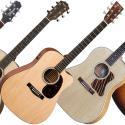
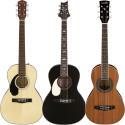



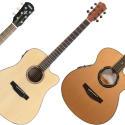
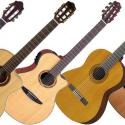
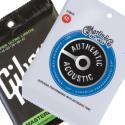
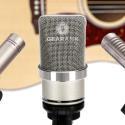

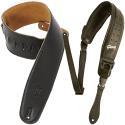
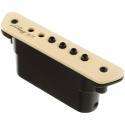
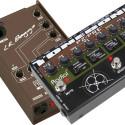
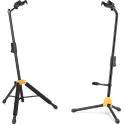
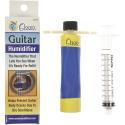
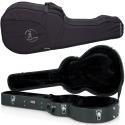
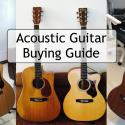
Publication of our August 2021 Edition resulted in the following guitars coming off the recommended list above, but you can still read our analysis of them:
As a result of our September 2020 update the following guitar came off the recommended list above, but you can still see our analysis of it: